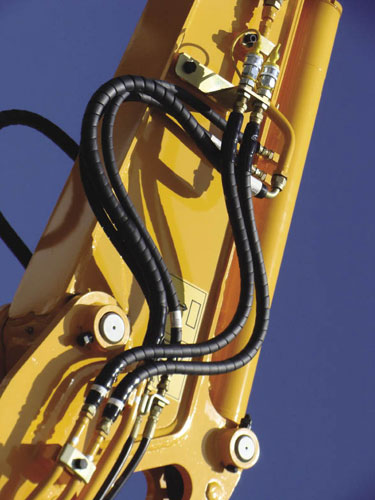Modern hydraulic systems are flourishing, as they have one particularly important thing going for them: Power density. No other technology can match the pure brute force of hydraulic oil (often at pressures approaching 3000 psi, 5000 psi, or even higher) and do it in a reasonable amount of space. That’s why we see hydraulics at work in some of the most demanding applications, from the Caterpillar equipment building our roads and cities to the John Deere equipment servicing our farmland and the Komatsu equipment harvesting the raw materials from our mines. That’s not to say that hydraulics can’t be precise, however. You will find the technology on both passenger airliners and military jets, on machine tools and material handling equipment.
Hydraulics differs from pneumatics in that the medium being used to transmit power is a liquid as opposed to a gas. The liquid is generally hydraulic fluid, which is based on a mineral oil base stock, although in some cases, water can be used—but this requires the use of very specialized components and is not common. Hydraulic fluid has low compressibility (or a high bulk modulus) and generally a good thermal capacity.
Naysayers may argue that hydraulics is a dirty, loud and even an environmentally unfriendly technology. However, that lazy argument doesn’t ring true for fluid power engineers. Those claims merely indicate that the systems being described are improperly designed, built, or maintained.
Understanding the operation of and parameters for the application is critical, as is a good working knowledge of sealing and how to deal with contamination. Even something as basic as adding a new component to a sealed hydraulic system can introduce contamination that leads to eventual systemic breakdown. The bottom line is that, as in any industrial system, smart engineering design and regular maintenance will avoid problems in the future.


